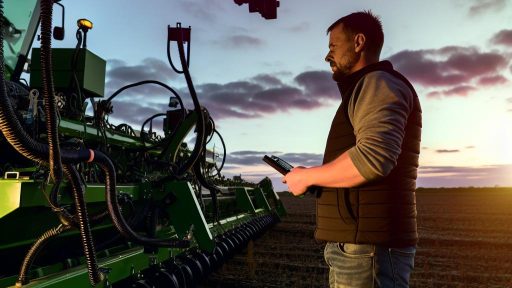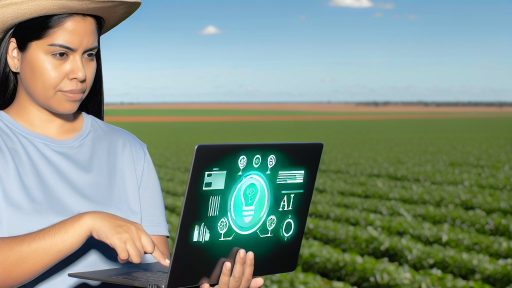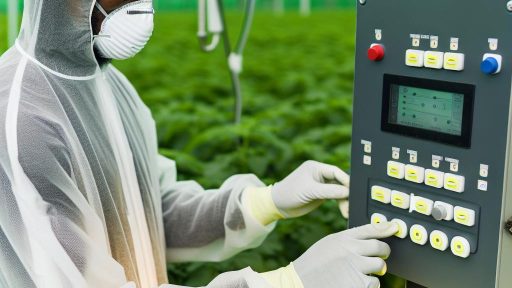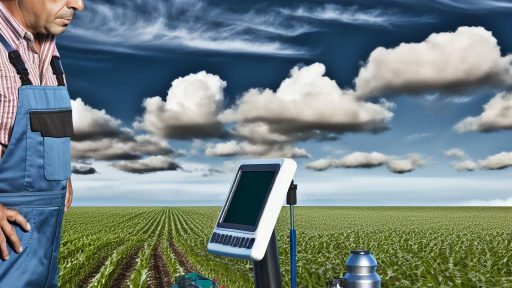Introduction to Data-Driven Farming and Its Importance
Data-driven farming revolutionizes the agricultural industry.
This approach utilizes technology and data analytics for better decision-making.
Farmers can optimize their practices and increase productivity significantly.
Data-driven methods also enhance resource management on farms.
As a result, farmers experience reduced costs while maximizing yields.
Understanding Data-Driven Practices
Data-driven farming leverages various technologies and analytical tools.
Farmers use sensors to collect real-time data on soil conditions.
GPS technology aids in field mapping and precision farming techniques.
Moreover, weather forecasting tools provide insights for planting and harvesting.
Benefits of Data-Driven Farming
- This method improves crop monitoring and pest management.
- Farmers can track performance metrics throughout the growing season.
- It enhances sustainability by minimizing waste and resource use.
Overall, data-driven farming contributes to more informed decisions.
Challenges in Implementing Data-Driven Farming
Despite its benefits, farmers face several challenges.
Data management complexities can overwhelm less tech-savvy individuals.
Additionally, high initial investment costs deter some farmers from adopting these practices.
Furthermore, there is a learning curve associated with new technologies.
Overview of Software Solutions in Agriculture
Importance of Software in Farming
Software solutions have revolutionized modern agriculture.
Transform Your Agribusiness
Unlock your farm's potential with expert advice tailored to your needs. Get actionable steps that drive real results.
Get StartedThey facilitate better decision-making for farmers.
Furthermore, they enhance efficiency and productivity on farms.
Categories of Agricultural Software
Various categories of agricultural software exist today.
Farm management software helps in planning and tracking operations.
Precision agriculture software uses data analysis for optimal planting.
Additionally, supply chain management solutions streamline logistics.
Examples of Software Solutions
Farmer’s Edge provides data-driven insights for farmers.
Cropio offers tools for field management and crop monitoring.
Moreover, Granular assists in financial planning and analysis.
Benefits of Using Software
Using software improves crop yields and profitability.
It also reduces waste and lowers operational costs.
Moreover, farmers gain access to real-time data and forecasts.
Challenges in Implementing Software
Farmers often face challenges in adopting new technologies.
High initial costs can deter many from investing in software.
Additionally, the complexity of software may require training.
Future Trends in Agricultural Software
The future of agriculture software looks promising.
Integration with IoT devices will further enhance data collection.
Artificial intelligence will provide deeper insights into farming practices.
Ultimately, software will continue to drive innovation in agriculture.
Key Technologies Supporting Data Analysis in Farming
Precision Agriculture Tools
Precision agriculture tools enhance crop efficiency.
These tools utilize GPS technology for accurate field mapping.
Farmers can apply fertilizers and pesticides based on specific needs.
This practice reduces waste and environmental impact.
Remote Sensing Technology
Remote sensing technology offers an aerial perspective.
Showcase Your Farming Business
Publish your professional farming services profile on our blog for a one-time fee of $200 and reach a dedicated audience of farmers and agribusiness owners.
Publish Your ProfileIt uses satellites and drones to gather data on crop conditions.
This data helps farmers monitor health and growth patterns.
Consequently, informed decisions can be made swiftly.
Data Management Software
Data management software organizes vast amounts of information.
Farmers can easily track yields, weather patterns, and expenses.
Using this software streamlines productivity analysis.
Moreover, it facilitates better financial planning and resource allocation.
IoT Devices in Farming
IoT devices connect various farming equipment to the internet.
These devices collect real-time data from the field.
Farmers receive alerts about soil moisture and temperature changes.
Consequently, they can respond quickly to adverse conditions.
Predictive Analytics
Predictive analytics uses historical data to forecast trends.
This technology helps farmers anticipate crop yields and pest outbreaks.
Thus, they can plan better for future planting seasons.
Furthermore, it can simplify inventory management and supply chain logistics.
See Related Content: Selecting The Best Automated Machinery For Small Farms
Benefits of Using Software for Crop Management Decisions
Enhanced Data Collection
Software simplifies the collection of agricultural data.
Farmers can easily track soil health and moisture levels.
This data helps in making informed decisions swiftly.
Improved Decision-Making
Access to real-time data enhances decision-making processes.
Farmers can analyze trends and patterns effectively.
Consequently, they can optimize planting schedules.
Increased Efficiency
Software tools streamline farming operations significantly.
They automate tasks such as irrigation and fertilization.
This automation leads to better resource management.
Cost Savings
Utilizing software reduces operational costs effectively.
Farmers save on labor and material expenses.
Moreover, precise applications minimize waste and enhance yields.
Risk Management
Software aids in identifying potential risks early.
Farmers can anticipate weather changes and pest outbreaks.
By doing so, they can implement preventive measures quickly.
Data Sharing and Collaboration
Farmers can share data easily with agronomists and consultants.
Collaboration enhances strategies for various challenges.
This teamwork promotes better outcomes overall.
Access to Market Insights
Software provides valuable market insights to farmers.
This information assists in planning for demand fluctuations.
Understanding market trends can lead to better pricing strategies.
Find Out More: Precision Farming With Artificial Intelligence
Case Studies of Successful Data-Driven Farming Implementations
Precision Agriculture at Green Valley Farms
Green Valley Farms adopted precision agriculture techniques to enhance crop yields.
The farm utilized GPS technology for field mapping.
Showcase Your Farming Business
Publish your professional farming services profile on our blog for a one-time fee of $200 and reach a dedicated audience of farmers and agribusiness owners.
Publish Your ProfileThey analyzed soil data to determine nutrient needs.
As a result, they optimized their fertilizer applications.
This approach increased productivity by 30% within the first season.
Smart Irrigation Solutions at Hillside Orchards
Hillside Orchards implemented smart irrigation systems to manage water usage.
They installed sensors to monitor soil moisture levels.
Data-driven insights enabled them to water crops efficiently.
Consequently, they reduced water consumption by 40%.
This precision lowered costs while maintaining fruit quality.
Data Analytics in Livestock Management at Sunny Acres
Sunny Acres used data analytics to improve livestock health and productivity.
They deployed wearable technology to monitor animal movements.
This data highlighted health issues before they became critical.
As a result, their livestock survival rates increased significantly.
The farm reported a 15% increase in milk production as well.
Crop Disease Prediction at Organic Fields
Organic Fields developed a predictive model for crop diseases.
They analyzed historical data and weather patterns for insights.
This helped them identify disease risks early and mitigate them.
Implementing this model reduced crop loss by 20%.
Farmers found this proactive approach invaluable for sustainability.
Yield Forecasting at Harvest Technology Group
Harvest Technology Group built a yield forecasting tool using machine learning.
They integrated satellite imagery with agricultural data.
This provided accurate forecasts of crop yields before harvest.
Farmers adjusted their marketing strategies based on these forecasts.
The result was improved profit margins and reduced food waste.
Discover More: Enhancing Soil Health with IoT-Based Monitoring Tools
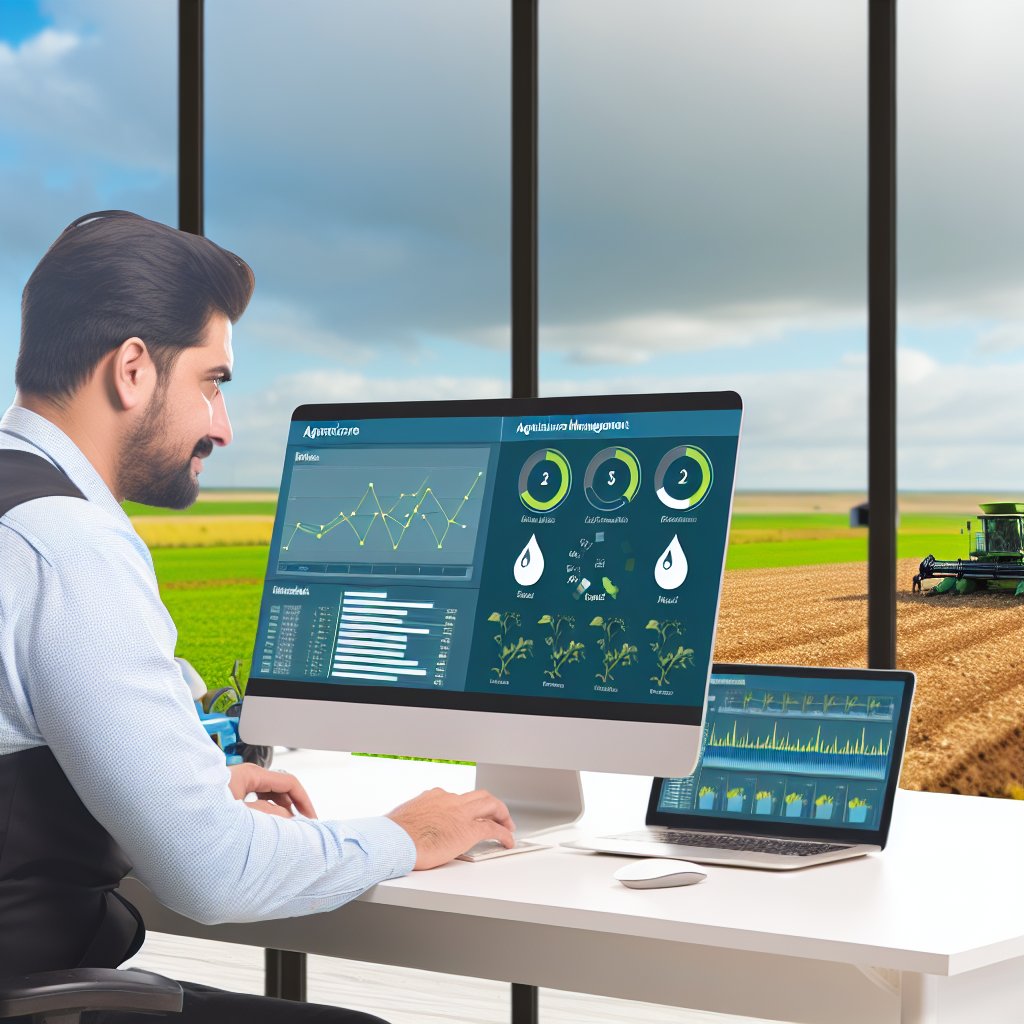
Challenges and Limitations of Software in Agriculture
Technological Barriers
Many farmers face significant technological barriers when adopting software solutions.
Limited internet connectivity complicates data access in remote areas.
Older farming equipment often lacks integration with modern software.
Consequently, farmers may feel overwhelmed by technology adoption.
High Costs
The financial investment required for software can be prohibitive.
Many agricultural software solutions come with subscription fees.
Small farmers may struggle to justify these costs.
Moreover, purchasing new hardware can further strain budgets.
User Experience and Training
User experience is a critical factor in software adoption.
Some software lacks intuitive interfaces, making navigation challenging.
Additionally, training staff on new systems requires time and resources.
Without proper training, the benefits of software may remain unrealized.
Data Management Issues
Data management poses another limitation for farmers.
Many agricultural software solutions generate vast amounts of data.
Handling and analyzing this data can overwhelm small farms.
Furthermore, integrating data from various sources often proves difficult.
Showcase Your Farming Business
Publish your professional farming services profile on our blog for a one-time fee of $200 and reach a dedicated audience of farmers and agribusiness owners.
Publish Your ProfileRegulatory Challenges
Farmers must also navigate complex regulations related to data usage.
Software solutions may not comply with local data protection laws.
This can lead to potential legal issues and penalties.
As a result, farming operations may delay software implementation.
Dependency on Technology
Over-reliance on software can create vulnerabilities.
In case of system failures, farmers may lose critical insights.
Additionally, technical support is not always readily available.
This can lead to prolonged downtime during critical farming periods.
Find Out More: IoT Security Considerations for Agricultural Systems
Future Trends in Agricultural Technology and Data Usage
Increased Automation
Automation in farming is set to accelerate in the coming years.
Robotic systems will manage tasks like planting and harvesting with ease.
Furthermore, drones will play a pivotal role in monitoring crops from above.
This transition will improve efficiency and reduce labor costs significantly.
Data Analytics for Decision Making
Farmers will increasingly rely on data analytics for informed decisions.
Utilizing machine learning, they can predict crop yields more accurately.
Additionally, real-time data will allow for timely interventions during adverse weather.
These innovations foster a more responsive agricultural practice.
Sustainability Through Technology
Emerging technologies will enhance sustainable farming practices.
Water management systems will optimize irrigation processes, conserving resources.
Moreover, precision agriculture will minimize the use of fertilizers and pesticides.
This approach not only protects the environment but also increases yield quality.
Integration of IoT Devices
The Internet of Things (IoT) is revolutionizing agriculture.
Farmers will use sensors to monitor soil moisture and nutrient levels continuously.
Data from these devices will facilitate better crop management decisions.
This integration will lead to more efficient farming operations.
Blockchain for Transparency
Blockchain technology promises greater transparency in food supply chains.
It will track produce from farm to table, ensuring food safety and authenticity.
This transparency builds trust among consumers regarding sourcing practices.
Consequently, it benefits brands looking to emphasize ethical practices.
Global Collaboration and Knowledge Sharing
As technology advances, global collaboration will intensify in agriculture.
Farmers will share insights and best practices through digital platforms.
This sharing cultivates innovation driven by collective knowledge.
Ultimately, it leads to improved outcomes for global food production.
Best Practices for Integrating Data Solutions in Farming Operations
Understand Your Data Needs
Begin by assessing your current farming operations.
Identify specific areas where data can enhance productivity.
Consider soil health, crop yield, and resource management.
Gather input from farm managers and fieldworkers.
This ensures that you target relevant data solutions effectively.
Invest in the Right Technology
Choose software that aligns with your data needs.
Look for solutions that are user-friendly and scalable.
Showcase Your Farming Business
Publish your professional farming services profile on our blog for a one-time fee of $200 and reach a dedicated audience of farmers and agribusiness owners.
Publish Your ProfileConsider platforms that offer real-time data analytics.
Incorporate precision agriculture tools for detailed insights.
Don’t overlook mobile applications for on-the-go access.
Train Your Team
Provide comprehensive training on new software and tools.
Ensure that all employees understand the value of data.
Encourage team members to share their experiences and insights.
This helps build a culture of data-driven decision making.
Regular workshops improve skills and reinforce learning.
Implement Data Collection Practices
Establish consistent data collection methods on your farm.
Use sensors and IoT devices to gather real-time data.
Ensure data is collected on weather patterns and soil conditions.
Integrate GPS technology for accurate field mapping.
Regularly review and update data collection protocols.
Analyze and Act on Data
Employ data analytics tools to interpret collected data.
Identify trends that impact your farming operations.
Make decisions based on comprehensive data analysis.
Adjust your strategies as new data becomes available.
Use visualizations to communicate insights with your team.
Continuously Monitor and Improve
Regularly assess the effectiveness of your data solutions.
Solicit feedback from your team on software usability.
Keep an eye on emerging technologies in agriculture.
Adapt to changing conditions and evolving technologies.
Celebrate successes and learn from challenges.
Additional Resources
AI in Agriculture and Farming: Revolutionizing Crop Growth – Intellias
AI revolutionizing industries worldwide: A comprehensive overview …

